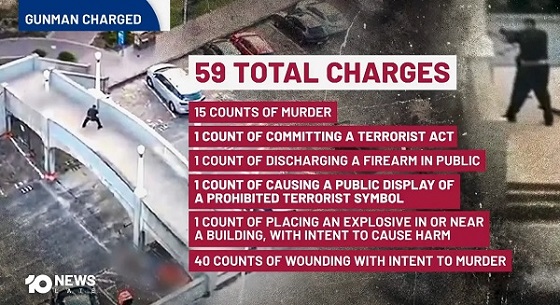Crime
ASIRT Investigation reveals a series of life-threatening incidents police officers overcame to arrest suspects
From the Alberta Serious Incident Response Team (ASIRT)
RCMP officers acted reasonably in shootings
On Oct. 13, 2017, the Alberta Serious Incident Response Team (ASIRT) was directed to investigate the circumstances surrounding two officer-involved shootings that occurred the same day during a continuing event.
The first officer-involved shooting resulted in a minor gunshot wound to a 20-year-old woman. The second officer-involved shooting resulted in serious injuries to a 20-year-old man. Evidence obtained during the investigation included statements from civilian witnesses, EMS personnel, all involved officers and the occupants of the stolen vehicles, as well as radio communications and multiple available video recordings of portions of the events.
On Oct. 13, 2017 at 9:14 a.m., a man called RCMP to report that he had just been involved in a dispute with another man driving a light-coloured Chevrolet truck and when he attempted to confront the driver, the man threatened him with a large knife. There was a female passenger in the truck. When police ran the licence plate provided and contacted the registered owner, it was determined that the truck had been stolen from the Didsbury area earlier that morning.
At 1:30 p.m., the first man and woman picked up a second man in Innisfail who had just been released on bail, having been arrested for possession of a stolen vehicle the day before. They did so in the stolen vehicle seen earlier in the day in Sundre.
At approximately 3:15 p.m., the son of the stolen truck’s owner called RCMP to report that he had spotted the stolen truck in Sundre and was following it. In response, the driver of the stolen truck rammed the son’s car and attempted to run him over when he exited his vehicle. The man threw himself out of the way, but he was struck and sustained minor injury to his leg. The female passenger waved a large knife and threatened to kill the son.
A short time later, officers came across the truck, and unsuccessfully tried to conduct a traffic stop. As officers pulled alongside, the driver could be seen wearing sunglasses and a bandana covering his nose and mouth. The officers terminated the pursuit as both trucks headed west of Sundre but shortly thereafter, they saw the stolen truck driving on a rural road. The driver taunted police as he passed them. Due to concerns for public safety, police did not initiate a pursuit.
The same officers encountered the stolen truck being driven in Caroline but, again, no pursuit was initiated. Shortly thereafter, the officers followed as the truck was driven into a field. The driver turned around and drove back in the direction of the officers who exited their vehicle and drew their service pistols. The truck drove a wide arc around them, so neither officer fired.
At approximately 3:45 p.m., other officers saw the stolen truck travel north on Hwy 22, just west of Caroline, and followed. Police unsuccessfully tried to set up spike belts at two locations but the stolen vehicle avoided them, in one case driving directly at an officer, who had to take evasive action to avoid being struck.
A pursuit was declared shortly after. While followed by two separate police vehicles with emergency lights activated, speeds reached 170-180 km/hr. As the pursuit headed eastbound on TWP Road 400, the woman in the back seat of the stolen truck threw a child’s car seat and other items onto the roadway, creating hazards and attempting to deter the police from continuing their pursuit. The first man was driving and the second man was in the front passenger seat.
As the stolen truck was pursued eastbound onto TWP Road 394, it approached a driveway where an officer had parked his police vehicle and extended a spike belt across both lanes, holding the line in the north ditch. The first man drove the stolen truck left of centre and turned into the north ditch, driving towards the officer. He suddenly pulled back onto the road and the officer ran back beside his police vehicle and drew his pistol. The stolen truck entered the south ditch, drove over the driveway approach past the officer and police vehicle, avoiding the spike belt and returned back to the road, moving eastbound.
Instead of continuing eastbound, the truck swung around to face back towards the officer, his police vehicle and two other officers who had arrived and placed their police vehicles to partially block off any westbound escape. The truck headed directly towards the officer who had earlier placed the spike belt as he stood by his police vehicle. The officer believed that the driver was purposely trying to “run” him over as there was no reason to proceed westbound and engage with police when the eastbound road was unobstructed. At approximately 4:27 p.m., as the truck drove towards the officer, fishtailing and colliding with the police vehicle and coming within feet of the officer, the officer and one other fired their service pistols. A bullet grazed the top of the back of the woman’s head causing a relatively minor laceration.
The truck drove over the spike belt, which destroyed the passenger side tires, leading the truck to flee on its rims at approximately 60-70 km/hr. As an officer tried to set up another spike belt, the truck drove at the officer, who had to retreat to the ditch. At 4:31 p.m., as the truck approached the Hwy 20 intersection, an officer was authorized to force the truck off the road. The officer rammed the side of the truck, forcing it into the north ditch with the police vehicle on one side and a fence on the other. The two men climbed through the passenger window and fled to a nearby field, leaving the injured woman in the back seat.
When the two men came upon a farmhouse, they observed a woman run inside. They approached and kicked in the door to the home where two women were present with children. When they found out the women had no keys to the vehicles on the property, the men took their cellphones so they could not call for assistance, and fled to a second rural residence. They broke into vehicles, obtained a garage door opener to gain access to the residence and obtained keys to a black Ford F250 truck that they then attempted to flee in. The second man was now driving with the first man in the front passenger seat. As they were driving out, an officer driving towards them twice attempted to pin them in on a fence but the stolen truck suddenly reversed and rammed the police truck with enough force to set off the airbags, disabling the police vehicle.
The newly stolen truck was driven through the field and down the 500-metre driveway to access Hwy 20, approaching a point where two officers were placing a spike belt. The truck drove off the roadway into the ditch where one armed officer was. A second armed officer moved forward towards the truck on the south grass shoulder of the driveway. The vehicle suddenly accelerated, re-entered the roadway, swerved aggressively to avoid the spike belt and drove directly towards the second officer. Had he not taken evasive actions, it is beyond dispute that the officer would have been struck by the middle of the front grill of the stolen truck. Available video confirmed that the stolen truck came within what appears to be a matter of 12 to 18 inches of the officer, causing both officers to discharge their service pistols.
Unknown to the officers, the 20-year-old driver sustained two gunshot wounds that left him unable to feel or move his legs. The truck briefly came to a stop in the south ditch, just short of Hwy 20. When the passenger looked through the broken rear window and appeared to reach for something, officers shouted commands to stop. The passenger reached his leg over the center console and “floored” the accelerator, causing the officers to resuming firing.
The truck drove out of the east ditch, crossed Hwy 20 and went into the west ditch where it became immobilized in a grove of trees. Police provided medical care to the injured driver until Emergency Medical Services arrived. Ultimately, the man was airlifted to hospital by STARS air ambulance.
Of the two shots sustained, one shattered the man’s left forearm and the second shot entered his left shoulder shattering bone before becoming lodged in his spine resulting in permanent paralysis.
Having reviewed the comprehensive investigation, Susan Hughson, QC, Executive Director for ASIRT, has determined that there are no reasonable grounds to believe that the officers involved in these events committed any criminal offence(s). As such, no officer will be charged.
Under the Criminal Code, a police officer is authorized to use as much force as is reasonably necessary to perform his or her lawful duties. An officer may only respond with lethal force in circumstances where he or she reasonably believes that there is an imminent risk of death or grievous bodily harm to the officer or any other person. An officer may also use lethal force to prevent flight in limited circumstances.
At the time of this incident, the involved officers were all acting in the lawful execution of their duties. There were more than reasonable grounds to believe that some or all of the occupants of both the first and second stolen trucks had committed indictable criminal offences.
In the entire course of these events, the conduct of the three individuals could objectively demonstrate the danger and significant risk to public. Multiple videos combined with the evidence of both civilian and police witnesses demonstrated that the three occupants of both stolen trucks were reckless, motivated to do whatever was necessary to evade apprehension and, in those circumstances, extremely dangerous. Both men reported that it had not been their intention to hit anyone. However, their conduct, at a minimum, would have created a reasonable apprehension that this was their intent. One person had been threatened and struck, another had been threatened with death, and the stolen vehicles had been driven towards officers in a manner that could easily have been interpreted as an intention to run them down.
Based on the actions of these three individuals, it is only good fortune that no civilian nor police officer was seriously injured or killed. At the time of the first officer-involved shooting, the circumstances created an objectively reasonable belief that there was an imminent risk of grievous bodily harm or death and, as such, officers were entitled to use lethal force. At the time of the second officer-involved shooting, once again, the circumstances created an objectively reasonable belief that there was an imminent risk of grievous bodily harm or death and both officers were entitled to use lethal force to address that threat.
Although the injury is believed to have occurred by the time of the attempted flight with the assistance of the passenger, based on all the evidence, it was subjectively and objectively reasonable to resort to lethal force to prevent further flight. The force used was necessary for the purpose of protecting the officer or any other person from imminent or future death or grievous bodily harm. Both men had repeatedly demonstrated a willingness, over a very limited period of time, to risk causing death or grievous bodily harm to both civilians and officers to further their flight and evade apprehension, and had engaged in a protracted crime spree doing so. The risk was not hypothetical. The threat was relatively immediate. In their multiple encounters that day, they had threatened and/or endangered life. If anything, their conduct had been escalating. The rapid forward movement of the vehicle was reasonably inferred to be an attempt at continued flight and the vehicle had a clear path forward. The only means at their disposal in that moment was the use of lethal force. Given the demonstrated conduct of both men, they needed to be stopped before they seriously injured or killed someone. The fact that they had not done so to that point was the result of good luck, nothing more. It was reasonable to act in the circumstances.
ASIRT’s mandate is to effectively, independently, and objectively investigate incidents involving Alberta’s police that have resulted in serious injury or death to any person. This mandate includes incidents involving discharge of a firearm that would likely have resulted in serious injury or death had the person been struck.
Crime
Bondi Beach Survivor Says Cops Prevented Her From Fighting Back Against Terrorists


From the Daily Caller News Foundation
A woman who survived the Hanukkah terrorist attack at Bondi Beach in Australia said on Monday that police officers seemed less concerned about stopping the attack than they were about keeping her from fighting back.
A father and son of Pakistani descent opened fire on a Hanukkah celebration Sunday, killing at least 15 people and wounding 40, with one being slain on the scene by police and the other wounded and taken into custody. Vanessa Miller told Erin Molan about being separated from her three-year-old daughter during Monday’s episode of the “Erin Molan Show.”
“I tried to grab one of their guns,” Miller said. “Another one grabbed me and said ‘no.’ These men, these police officers, they know who I am. I hope they are hearing this. You are weak. You could have saved so many more people’s lives. They were just standing there, listening and watching this all happen, holding me back.”
Dear Readers:
As a nonprofit, we are dependent on the generosity of our readers.
Please consider making a small donation of any amount here.
Thank you!
WATCH:
“Two police officers,” Miller continued. “Where were the others? Not there. Nobody was there.”
New South Wales Minister of Police Yasmin Catley did not immediately respond to a request for comment from the Daily Caller News Foundation about Miller’s comments.
Australian Prime Minister Anthony Albanese vowed to enact further restrictions on guns in response to the attack at Bondi Beach, according to the Associated Press. The new restrictions would include a limit on how many firearms a person could own, more review of gun licenses, limiting the licenses to Australian citizens and “additional use of criminal intelligence” to determine if a license to own a firearm should be granted.
Sajid Akram, 50, and Naveed Akram, 24, reportedly went to the Philippines, where they received training prior to carrying out the Sunday attack, according to the Australian Broadcasting Corporation. Naveed Akram’s vehicle reportedly had homemade ISIS flags inside it.
Australia passed legislation that required owners of semi-automatic firearms and certain pump-action firearms to surrender them in a mandatory “buyback” following a 1996 mass shooting in Port Arthur, Tasmania, that killed 35 people and wounded 23 others. Despite the legislation, one of the gunmen who carried out the attack appeared to use a pump-action shotgun with an extended magazine.
Crime
The Uncomfortable Demographics of Islamist Bloodshed—and Why “Islamophobia” Deflection Increases the Threat


Addressing realities directly is the only path toward protecting communities, confronting extremism, and preventing further loss of life, Canadian national security expert argues.
After attacks by Islamic extremists, a familiar pattern follows. Debate erupts. Commentary and interviews flood the media. Op-eds, narratives, talking points, and competing interpretations proliferate in the immediate aftermath of bloodshed. The brief interval since the Bondi beach attack is no exception.
Many of these responses condemn the violence and call for solidarity between Muslims and non-Muslims, as well as for broader societal unity. Their core message is commendable, and I support it: extremist violence is horrific, societies must stand united, and communities most commonly targeted by Islamic extremists—Jews, Christians, non-Muslim minorities, and moderate Muslims—deserve to live in safety and be protected.
Yet many of these info-space engagements miss the mark or cater to a narrow audience of wonks. A recurring concern is that, at some point, many of these engagements suggest, infer, or outright insinuate that non-Muslims, or predominantly non-Muslim societies, are somehow expected or obligated to interpret these attacks through an Islamic or Muslim-impact lens. This framing is frequently reinforced by a familiar “not a true Muslim” narrative regarding the perpetrators, alongside warnings about the risks of Islamophobia.
These misaligned expectations collide with a number of uncomfortable but unavoidable truths. Extremist groups such as ISIS, Al-Qaeda, Hamas, Hezbollah, and decentralized attackers with no formal affiliations have repeatedly and explicitly justified their violence through interpretations of Islamic texts and Islamic history. While most Muslims reject these interpretations, it remains equally true that large, dynamic groups of Muslims worldwide do not—and that these groups are well prepared to, and regularly do, use violence to advance their version of Islam.
Islamic extremist movements do not, and did not, emerge in a vacuum. They draw from the broader Islamic context. This fact is observable, persistent, and cannot be wished or washed away, no matter how hard some may try or many may wish otherwise.
Given this reality, it follows that for most non-Muslims—many of whom do not have detailed knowledge of Islam, its internal theological debates, historical divisions, or political evolution—and for a considerable number of Muslims as well, Islamic extremist violence is perceived as connected to Islam as it manifests globally. This perception persists regardless of nuance, disclaimers, or internal distinctions within the faith and among its followers.
THE COST OF DENIAL AND DEFLECTION
Denying or deflecting from these observable connections prevents society from addressing the central issues following an Islamic extremist attack in a Western country: the fatalities and injuries, how the violence is perceived and experienced by surviving victims, how it is experienced and understood by the majority non-Muslim population, how it is interpreted by non-Muslim governments responsible for public safety, and how it is received by allied nations. Worse, refusing to confront these difficult truths—or branding legitimate concerns as Islamophobia—creates a vacuum, one readily filled by extremist voices and adversarial actors eager to poison and pollute the discussion.
Following such attacks, in addition to thinking first of the direct victims, I sympathize with my Muslim family, friends, colleagues, moderate Muslims worldwide, and Muslim victims of Islamic extremism, particularly given that anti-Muslim bigotry is a real problem they face. For Muslim victims of Islamic extremism, that bigotry constitutes a second blow they must endure. Personal sympathy, however, does not translate into an obligation to center Muslim communal concerns when they were not the targets of the attack. Nor does it impose a public obligation or override how societies can, do, or should process and respond to violence directed at them by Islamic extremists.
As it applies to the general public in Western nations, the principle is simple: there should be no expectation that non-Muslims consider Islam, inter-Islamic identity conflicts, internal theological disputes, or the broader impact on the global Muslim community, when responding to attacks carried out by Islamic extremists. That is, unless Muslims were the victims, in which case some consideration is appropriate.
Quite bluntly, non-Muslims are not required to do so and are entitled to reject and push back against any suggestion that they must or should. Pointedly, they are not Muslims, a fact far too many now seem to overlook.
The arguments presented here will be uncomfortable for many and will likely provoke polarizing discussion. Nonetheless, they articulate an important, human-centered position regarding how Islamic extremist attacks in Western nations are commonly interpreted and understood by non-Muslim majority populations.
Non-Muslims are free to give no consideration to Muslim interests at any time, particularly following an Islamic extremist attack against non-Muslims in a non-Muslim country. The sole exception is that governments retain an obligation to ensure the safety and protection of their Muslim citizens, who face real and heightened threats during these periods. This does not suggest that non-Muslims cannot consider Muslim community members; it simply affirms that they are under no obligation to do so.
The impulse for Muslims to distance moderate Muslims and Islam from extremist attacks—such as the targeting of Jews in Australia or foiled Christmas market plots in Poland and Germany—is understandable.
Muslims do so to protect their own interests, the interests of fellow Muslims, and the reputation of Islam itself. Yet this impulse frequently collapses into the “No True Scotsman” fallacy, pointing to peaceful Muslims as the baseline while asserting that the attackers were not “true Muslims.”
Such claims oversimplify the reality of Islam as it manifests globally and fail to address the legitimate political and social consequences that follow Islamic extremist attacks in predominantly non-Muslim Western societies. These deflections frequently produce unintended effects, such as strengthening anti-Muslim extremist sentiments and movements and undermining efforts to diminish them.
The central issue for public discourse after an Islamic extremist attack is not debating whether the perpetrators were “true” or “false” Muslims, nor assessing downstream impacts on Muslim communities—unless they were the targets.
It is a societal effort to understand why radical ideologies continue to emerge from varying—yet often overlapping—interpretations of Islam, how political struggles within the Muslim world contribute to these ideologies, and how non-Muslim-majority Western countries can realistically and effectively confront and mitigate threats related to Islamic extremism before the next attack occurs and more non-Muslim and Muslim lives are lost.
Addressing these realities directly is the only path toward protecting communities, confronting extremism, and preventing further loss of life.
Ian Bradbury, a global security specialist with over 25 years experience, transitioned from Defence and NatSec roles to found Terra Nova Strategic Management (2009) and 1NAEF (2014). A TEDx, UN, NATO, and Parliament speaker, he focuses on terrorism, hybrid warfare, conflict aid, stability operations, and geo-strategy.
The Bureau is a reader-supported publication.
To receive new posts and support my work, consider becoming a free or paid subscriber.
-

 Alberta2 days ago
Alberta2 days agoCanada’s New Green Deal
-

 Business2 days ago
Business2 days agoCanada’s recent economic growth performance has been awful
-

 Alberta2 days ago
Alberta2 days agoAlberta’s huge oil sands reserves dwarf U.S. shale
-

 Indigenous2 days ago
Indigenous2 days agoResidential school burials controversy continues to fuel wave of church arsons, new data suggests
-

 armed forces2 days ago
armed forces2 days agoOttawa’s Newly Released Defence Plan Crosses a Dangerous Line
-

 Health2 days ago
Health2 days agoSaskatchewan woman approved for euthanasia urged to seek medical help in Canada rather than US
-

 Business2 days ago
Business2 days agoCOP30 finally admits what resource workers already knew: prosperity and lower emissions must go hand in hand
-

 Health2 days ago
Health2 days agoCanadian gov’t considers sharing census data on gender-confused children






